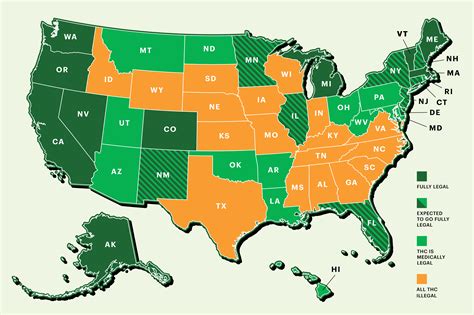The evolving landscape of marijuana legalization in the United States has seen a significant shift, especially with recent developments at both state and federal levels. As of March 1, 2023, 21 states, along with Washington D.C., Guam, and the Northern Mariana Islands, have enacted laws permitting the recreational use of marijuana. This expansion highlights the growing policy gap between federal regulations and state initiatives.
Recently Adopted Cannabis Legalization Laws indicate a trend towards more liberal policies at the state level. For instance, Minnesota has become the 23rd state to legalize adult-use recreational cannabis. Starting August 1, 2023, the possession of up to 2 pounds of marijuana will no longer be a crime in Minnesota, marking a significant shift in the state’s approach to marijuana regulation.

In Maryland, the Marijuana Legalization Amendment, Question 4, was presented as a legislatively referred constitutional amendment on the ballot on November 8, 2022. This move further demonstrates the states’ proactive role in shaping marijuana policy. Additionally, regulations such as the Pennsylvania Medical Marijuana Program’s final-form regulations, effective from March 4, 2023, indicate a growing acceptance and regulation of medical marijuana at the state level.
Despite these state-level advancements, marijuana remains illegal under federal law. The Controlled Substances Act (CSA) classifies marijuana as a Schedule I controlled substance, maintaining a federal prohibition regardless of state laws. This dichotomy presents legal and regulatory challenges, as highlighted in Recent Developments in Marijuana Law by CRS Reports.
Furthermore, President Biden’s statement on marijuana reform indicates a potential shift in federal policy, although significant limitations on trafficking, marketing, and underage sales are expected to remain in place. The Centers for Disease Control and Prevention also continue to monitor and research the public health implications of marijuana use, as evidenced in their reports on Marijuana and Public Health.
In conclusion, the United States is witnessing a growing divergence in marijuana policy between the federal government and individual states. While more states are moving towards legalization, significant federal restrictions remain, creating a complex legal landscape for marijuana use and regulation.